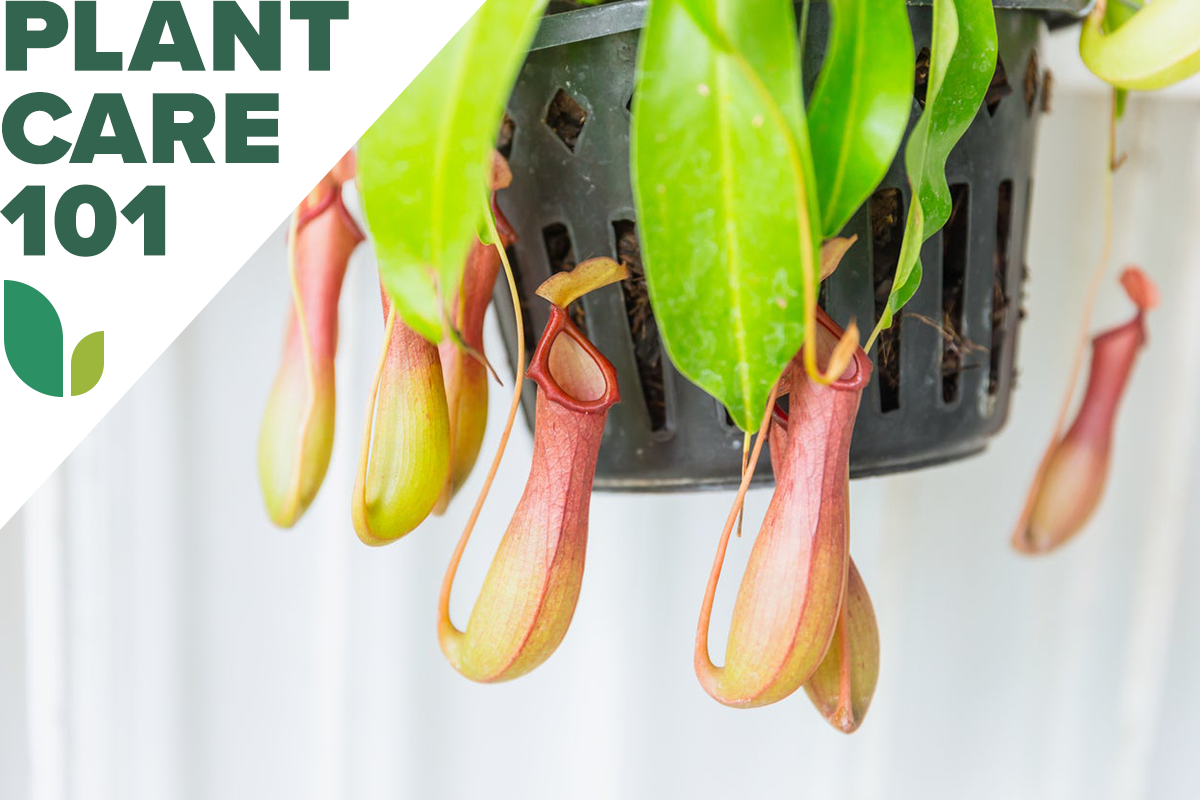

We may earn revenue from the products available on this page and participate in affiliate programs. Learn More ›
Pitcher plants are carnivorous, which eliminates their need for plant food. Tropical pitcher plants (Nepenthes spp.) are most often grown as houseplants, while hardier species, such as the purple pitcher plant (Sarracenia purpurea), die back into dormancy during winter. The latter should be grown in a bog garden or in an outdoor container moved to a chilly but protected position during winter.
Despite its popularity, tropical pitcher plant care can still be challenging indoors. Its foliage tolerates normal household conditions reasonably well, but it may not produce any pitchers unless provided with high levels of humidity.
Pitcher Plant Care at a Glance
Common Name: Tropical pitcher plant, monkey cups
Scientific Name: Nepenthes spp.
Soil: Long-fiber sphagnum moss mix
Light: Partial sun or bright, indirect light
Water: Constantly moist
Food: Insects
Temperature and Humidity: Warm temperatures, high humidity
Propagation: Tip cuttings
Safety: Nontoxic
RELATED: The 13 Creepiest Houseplants You’ve Ever Seen
Pitcher Plant Characteristics
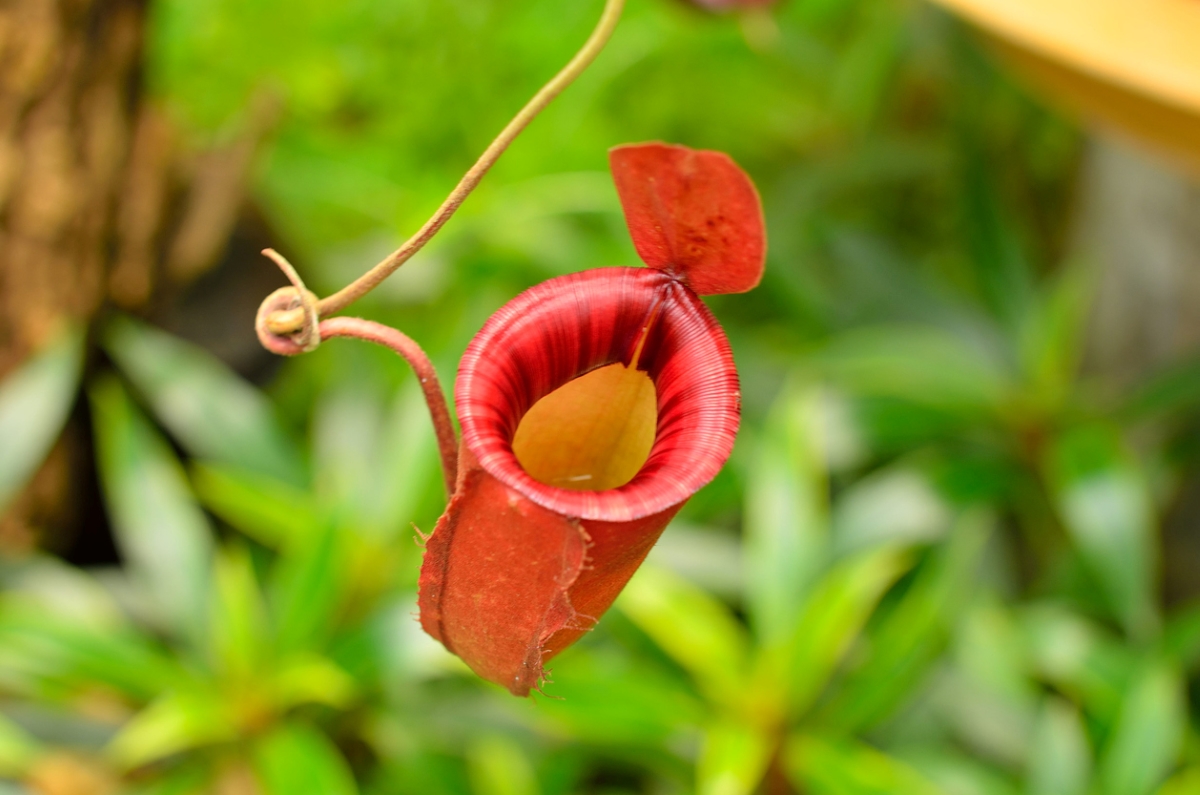
Native to countries that surround the Indian Ocean, tropical pitcher plants can climb to 70 feet in the genus’s natural habitats. Under optimum conditions, the midribs on its lance-shaped leaves send up tendrils from the blade points, which eventually form pitchers. Those vary in size and color according to the species, but they often include red or maroon streaks or spotting.
The pitchers’ coloring, which resembles a decaying carcass, helps attract flies. The vines also make inconspicuous stalks of greenish flowers on male and female plants, with male blooms producing an odor similar to decomposing flesh as an additional enticement to insects. Similar to the way Venus flytraps catch prey, bugs trapped in pitchers are then consumed by the digestive enzymes that pool at the receptacles’ bottoms.
Lowland types of pitcher plants generally are easier to grow than highland types, some of which require a large variation between daytime and nighttime temperatures.
Types of Pitcher Plants
- Nepenthes alata: Considered one of the easiest pitcher plants for beginners to grow, N. alata boasts large, 8-inch green pitchers speckled with red.
- Nepenthes ‘Lady Luck’: This cross between N. ventricosa and N. ampullaria produces 3- to 4-inch dark-red pitchers in lower light conditions than most varieties.
- Nepenthes x ventrata: A hybrid between N. alata and N. ventricosa, this cross is also easy to grow. Its 3- to 5-inch pitchers vary in color, from orange-tinged green to red.
Selecting Soil for Pitcher Plants
Pitcher plant potting mix shouldn’t actually be soil. A recommended mix is a combination of one part long-fiber sphagnum moss (the type used for growing orchids) and one part of either perlite or coarse builder’s sand. That mix will dry out too quickly in a terra-cotta containers, so place pitcher plants in plastic or glazed ceramic pots.
Net pots with open slots in the side, such as those used for hydroponics, also will work in high-humidity locations. Alternatively, some growers opt to plant pitcher plants in a terrarium’s substrate rather than in a pot.
The Right Light
Give pitcher plants about 4 hours of sunlight, preferably in the morning, followed by bright, indirect light for the rest of the day. Avoid midday sun, which might burn their leaves. If nearby windows don’t provide enough light, suspend a fluorescent or LED grow light about 12 to 15 inches above the foliage, timing it to run 12 to 14 hours per day.
The amount of required light varies by pitcher plant type. Some can thrive in bright, indirect light without any sun, while others can tolerate full sun—especially in winter when its rays are weaker.
RELATED: The Best Plants for Every Room of the House
Watering Pitcher Plants
A pitcher plant’s growing medium should be kept constantly moist but not soggy, similar to the feel of a wrung-out sponge that’s still damp. If watering the plant from the bottom of the pot, don’t leave it sitting in that water for long and allow it to drain afterward.
Use lukewarm rainwater, distilled water, or filtered water—such as that run through a reverse osmosis system—instead of hard tap water. Should fluid ever spill or drain out of the pitchers, add about an inch of one of the aforementioned waters to the bottom of each pitcher to prevent them from prematurely drying out.
Fertilizing Pitcher Plants
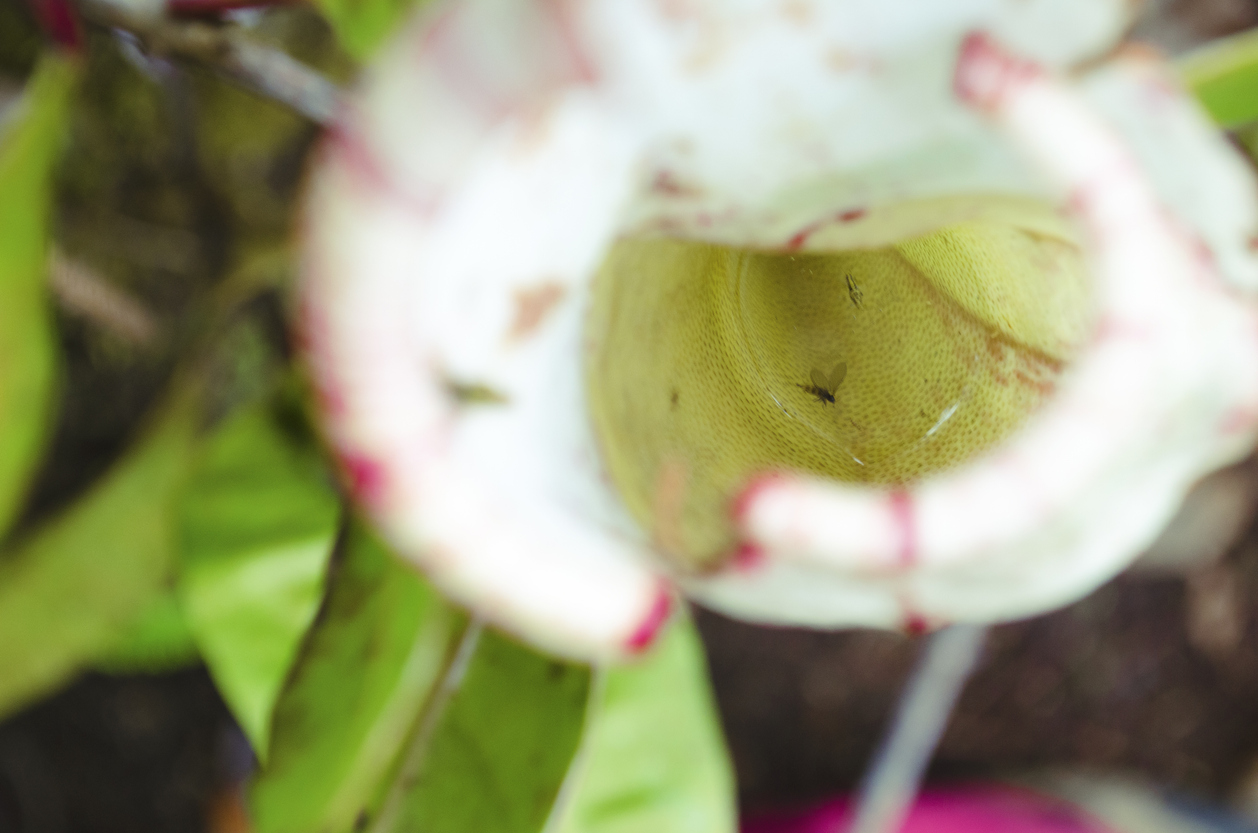
Because pitcher plants derive their nutrients from the insects they consume, they technically don’t require any fertilizer. However, some growers like to give them very small amounts of a 16-16-16 kelp fertilizer—mixing only ¼ teaspoon of the fertilizer into 1 gallon of water and spraying it onto the foliage—every month or so during spring and summer.
If there aren’t enough insects in the home to supply the plants naturally, purchase dried crickets from the pet store, since those often are fed to reptiles as well as to meat-eating plants! Place only one insect in each pitcher and wait until that one is completely dissolved before adding another.
Setting the Temperature and Humidity
Keep the area around an indoor pitcher plant at 75 to 88 degrees Fahrenheit during the day, with the temperature dropping to no lower than 60 degrees at night. Highland types often prefer nighttime temperatures down to 55 degrees, but that is difficult for most homeowners to manage.
Pitcher plants like very high humidity, somewhere in the 75- to 80-percent range. Providing that much humidity usually requires a grow tent or large terrarium, perhaps one of those constructed from an aquarium topped with a transparent lid and grow lights. (If the lid is left a bit ajar, a fan that blows over the top of it can help provide aeration.)
Plants outside of terrariums will often tolerate the average household’s lower humidity. However, they may not produce many pitchers under those drier conditions unless, perhaps, when grown as shower plants or kitchen plants. When moving a pitcher plant outdoors during summer, bring it back inside before temperatures drop below 50 degrees Fahrenheit.
Propagating Pitcher Plants
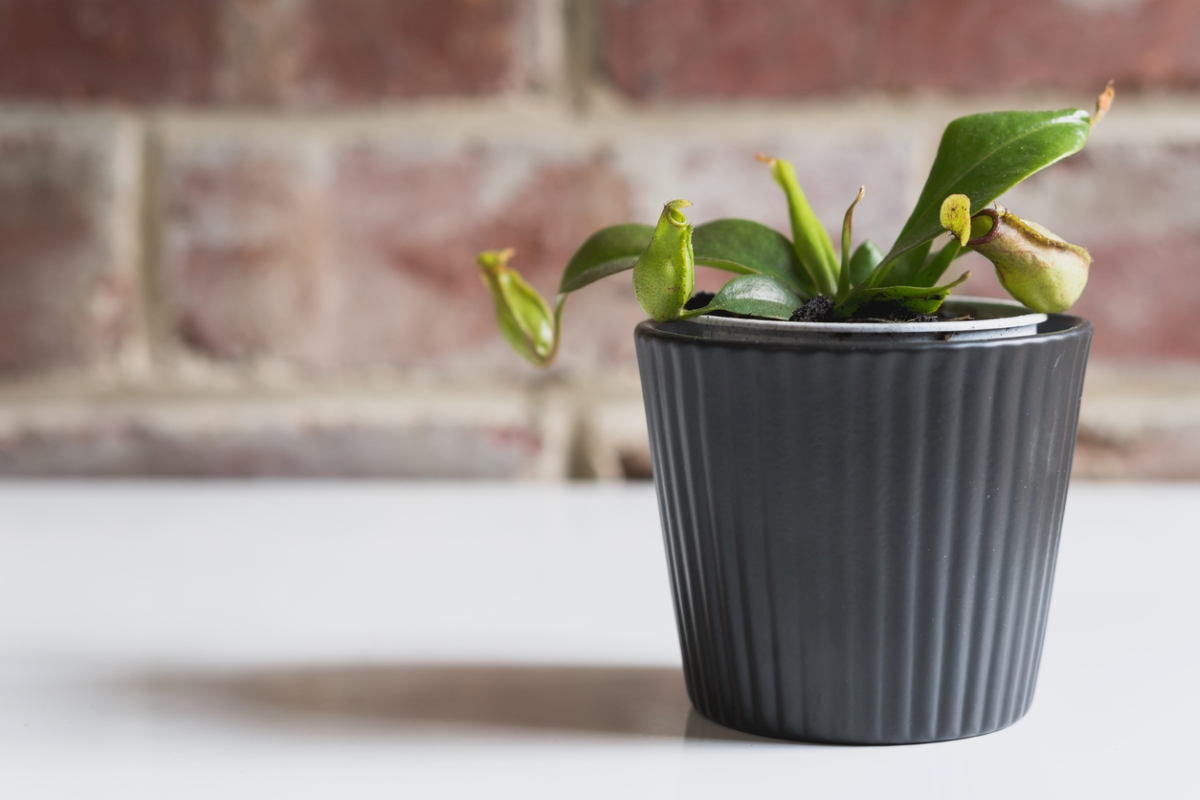
To propagate pitcher plants from cuttings, fill a pot with the type of mix typically used for the plants, as detailed under “Selecting Soil for Pitchers Plants” above. Take cuttings that include two or three leaves each from the tips of the parent plant, snipping just below the bottom leaf on each.
Remove the bottom leaf from a cutting to bare the leaf node and insert the cutting’s base into the potting medium deep enough to cover the node. After setting all the cuttings, enclose their pot in a plastic bag. Place the pot in a warm area with bright, indirect light until the cuttings root, which can take as little as a month or as long as one year.
Safety Considerations
Pitcher plants aren’t dangerous to people or pets—only to insects. But that does include all insects, the beneficial ones as well as those regarded as pests. So it’s best to keep your pitcher plants away from beehives and other places where helpful pollinators hang out.
Since monkeys like to drink from the cups, it’s possible that young children or pets may try to do so as well—this would not be hygienic, considering what could be floating around inside pitcher plant! Since it is a climbing plant, it is thankfully easy to suspend the pitchers out of reach of curious fingers or lapping tongues.
Potential Pests and Diseases
For obvious reasons, pitcher plants usually aren’t bothered by pests. After all, they can eat their enemies! They aren’t particularly prone to disease either. However, their leaves may turn yellowish or develop red streaks if they receive too much sun. To alleviate sunburn, move the plants to a less sunny site.
Their main problem usually is a failure to produce pitchers, which can indicate that they are receiving too little light or humidity. In that case, they should be moved to a sunnier or more humid location.
To keep pitcher plants strong, it’s a good idea to cut off flower stems of any form. Those blooms divert the plant’s energy away from producing cups and can be fetid on male plants.
RELATED: The 26 Best Plants for Bathroom Decor
FAQ About Pitcher Plant Care
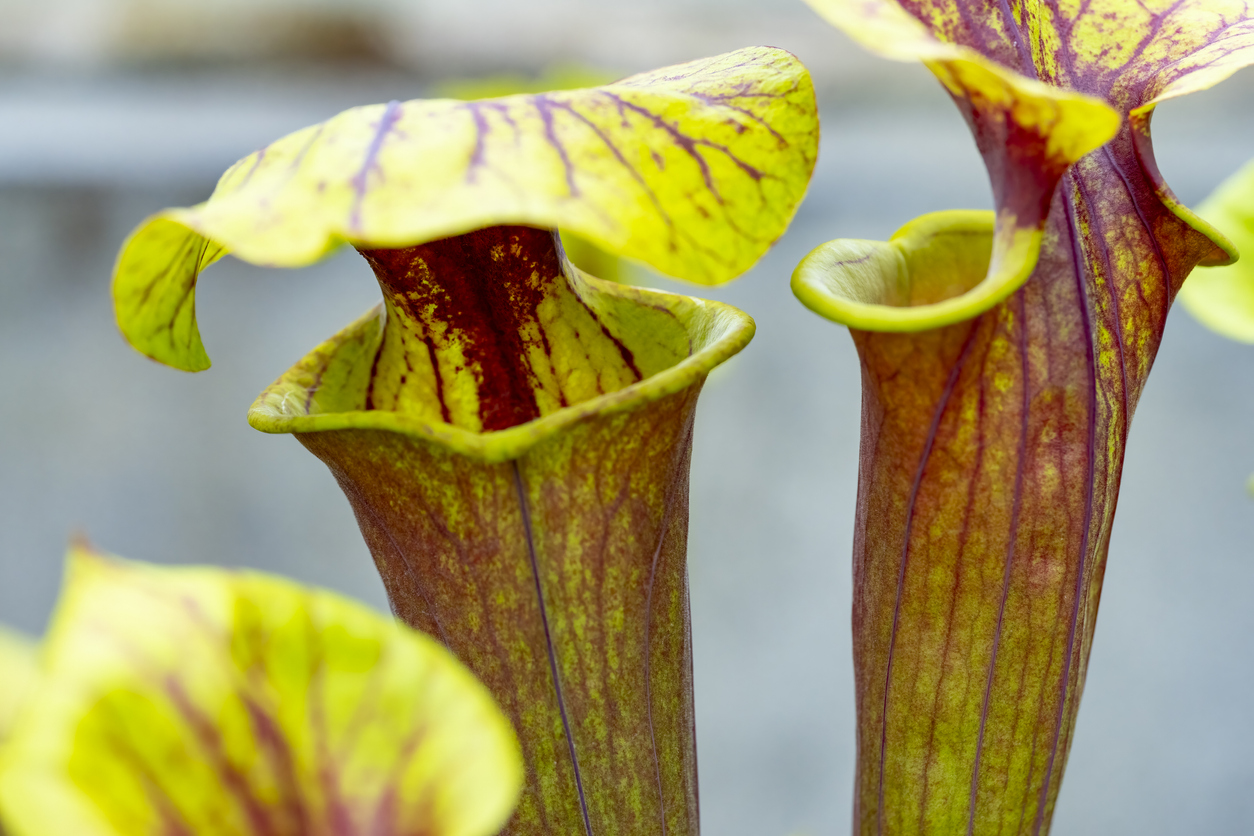
Below are a few answers to the most frequently asked questions on how to care for pitcher plant. For more extensive information, consult the above tips on everything from tip cuttings to tipped “cups.” Those horticultural houseplant hints should help make your plant the “pitcher” of health!
Q. How long do pitchers last on a pitcher plant?
The life of the pitchers varies from 1 to 8 months or so.
Q. Should I cut the dead pitchers off my pitcher plant?
Yes, but wait until the pitchers have turned completely brown to snip them off.
Q. When should you repot a pitcher plant?
Repot a pitcher plant about once every 2 years or whenever it outgrows the old pot.
Q. How much sunlight do pitcher plants need?
Give them about 4 hours of morning sun, followed by bright, indirect light for the remainder of the day.
Looking for more terrarium plants? Check out our guides on caring for baby tears, calathea, and maidenhair fern.
